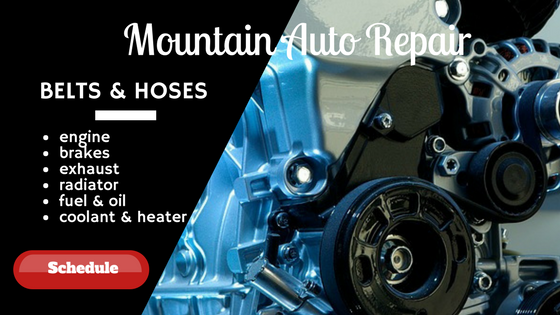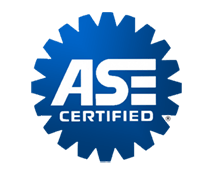LUBE, OIL, AND FILTER CHANGE
The belts and hoses in your engine are what keep your car or truck moving. They maintain the engine’s precise timing and transfer essential fluids, like coolant, brake fluid, and fuel.
If you’ve ever lost power steering or found yourself stranded on the side of the road with an overheated engine, you may have been dealing with a belt or hose failure.
Leaking hoses and worn or broken belts can cause serious damage. If a belt or hose fails, you could find yourself without power steering or stranded on the side of the road with an overheated engine (and a more expensive repair). And, with interference engines like you find in Subarus, a broken timing belt can actually destroy your engine.
With so many essential components—from engine to brakes—relying on the belts and hoses in your car, it’s important to bring your car or truck in for an inspection according to your vehicle’s maintenance schedule (typically at or around 100,000 miles).
SIGNS OF A WORN BELT OR HOSE
Bringing your vehicle in for regularly scheduled maintenance is the surest way to catch a worn belt or hose before it causes more serious damage. If caught before a failure, replacing worn belts and hoses can be a fast and relatively inexpensive process.
Symptom: Engine backfires or stalls.
If your engine is “acting up,” it could be a sign that your timing belt is showing signs of wear. To confirm a worn timing belt, look for fraying and worn teeth. If you notice wear and tear, even if you just had your timing belt replaced or you’re thousands of miles away from your vehicle’s recommended maintenance schedule, call a certified mechanic for an inspection.
Symptom: Engine squealing.
A worn serpentine belt could cause the belt to slip and squeal, especially when first starting the engine. Left unchecked, the belt could break and cause more serious engine damage through overheating, loss of power steering, and loss of the vehicle’s charging system.
Symptom: Engine is running hot.
Coolant hoses are responsible for moving anti-freeze and keeping your engine from overheating. If you notice your engine is running hot, you may have a cracked or leaking coolant hose.
If your A/C stops working, you’re more likely dealing with a worn or broken accessory belt. While accessory belts aren’t always essential, they can play a role in powering the alternator and other key components that keep your engine running smoothly, and it’s worth having them inspected on a routine basis.
You know the feel of your car. If your engine isn’t working the way it always has—or if you notice a leak—it’s time to bring your vehicle into a certified mechanic for a full inspection. A little check-up now could save hundreds or thousands of dollars in repairs down the road.
MOUNTAIN AUTO REPAIR BELT & HOSE INSPECTION, REPAIR, AND REPLACEMENT
Part of repairing and replacing broken belts and hoses is looking at the components that work in conjunction with them. A problem with a fitting, connector, or clamp may have caused the belt or hose damage that brought you in for repairs.
When you bring your car, truck, or van into Mountain Auto Repair for routine maintenance, belt and hose inspection, or belt and hose repair and replacement, our mechanics look for wear and tear on all essential components, including:
- Hoses
- Belts
- Clamps
- Connectors
- Fittings
- Gaskets
If we spot any operational or safety issues that need your attention now or in the future, we’ll work with you to plan the repairs.
Don’t wait for a broken timing belt or leaking coolant hose to destroy your engine. If your engine is acting up or you’re approaching the scheduled maintenance period for your vehicle, bring your car or truck into Mountain Auto Repair in North Boulder for a full belt and hose inspection and honest repairs done right the first time.
Recent Articles
© 2021 Mountain Auto Repair
Website by Benveloper.com




